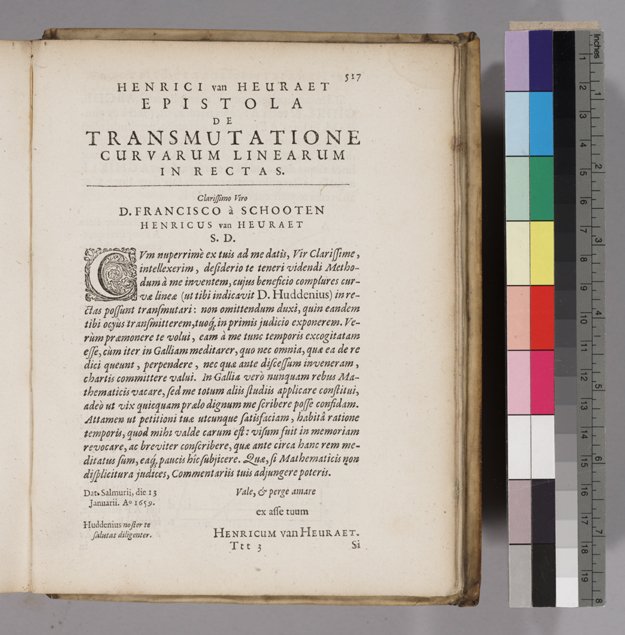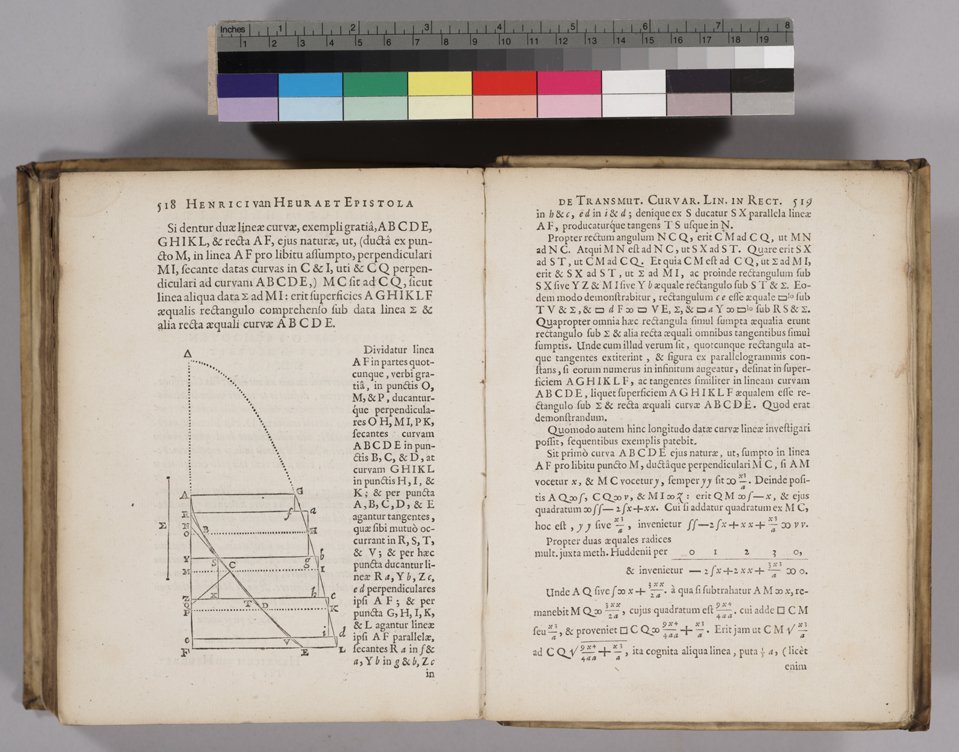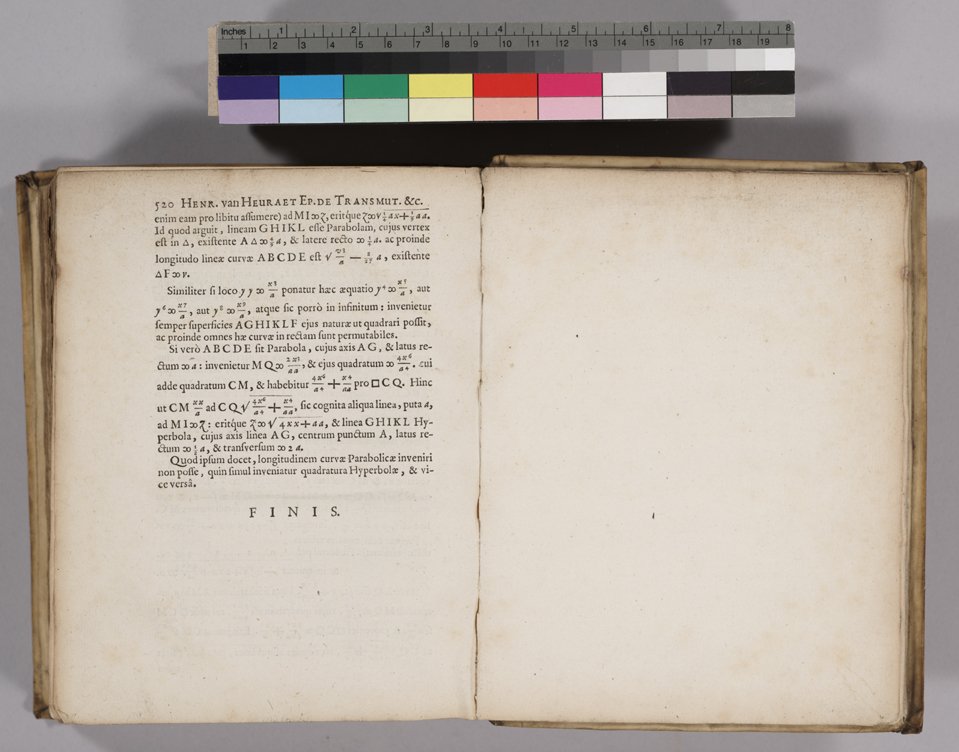- About MAA
- Membership
- MAA Publications
- Periodicals
- Blogs
- MAA Book Series
- MAA Press (an imprint of the AMS)
- MAA Notes
- MAA Reviews
- Mathematical Communication
- Information for Libraries
- Author Resources
- Advertise with MAA
- Meetings
- Competitions
- Programs
- Communities
- MAA Sections
- SIGMAA
- MAA Connect
- Students
- MAA Awards
- Awards Booklets
- Writing Awards
- Teaching Awards
- Service Awards
- Research Awards
- Lecture Awards
- Putnam Competition Individual and Team Winners
- D. E. Shaw Group AMC 8 Awards & Certificates
- Maryam Mirzakhani AMC 10 A Awards & Certificates
- Two Sigma AMC 10 B Awards & Certificates
- Jane Street AMC 12 A Awards & Certificates
- Akamai AMC 12 B Awards & Certificates
- High School Teachers
- News
You are here
Mathematical Treasures - Van Heuraet's Rectification of Curves

This is the title page of the brief work On the Transformation of Curves into Straight Lines, by Hendrick van Heuraet (1634–1660), published in the 1659 Latin edition of Descartes's Geometry, edited by van Schooten. Although van Heuraet was not the first to accomplish a rectification, a task that Descartes had said could not be done, this is the first publication of a general procedure, a procedure very close to our standard calculus procedure for finding the length of a curve.

On these two pages, van Heuraet describes his general procedure for rectification, one which tranforms the length into an integral, that is, the area under a curve. He then illustrates the procedure by calculating the length of the semi-cubical parabola, y2 = x3/a. (We can take a = 1 for simplicity.) Note that since the procedure for finding arc length involved first finding dy/dx (or the tangent to the curve), van Heuraet accomplishes this by using Descartes's normal method and Hudde's rule for finding a double root. Note also that van Heuratet uses Descartes's symbol for "equal" rather than our modern equal sign.

On this page, van Heuraet completes his calculation, noting that the answer is found by determining the area under the parabola. He further notes that he could also determine the lengths of the curves y4 = x5, y6 = x7, and so on. Finally, he shows that to find the length of a parabola he needs to be able to find the area under a hyperbola.
Frank J. Swetz and Victor J. Katz, "Mathematical Treasures - Van Heuraet's Rectification of Curves," Convergence (January 2011)




